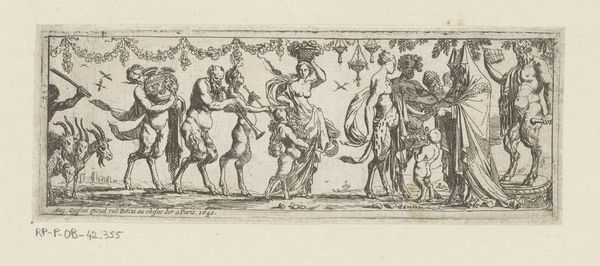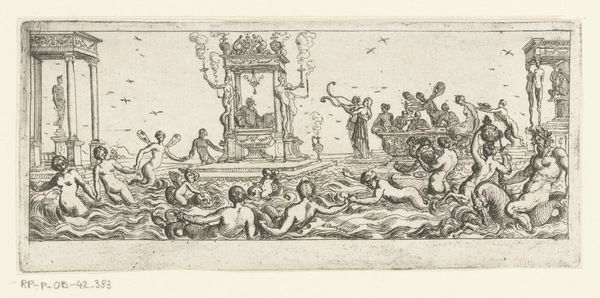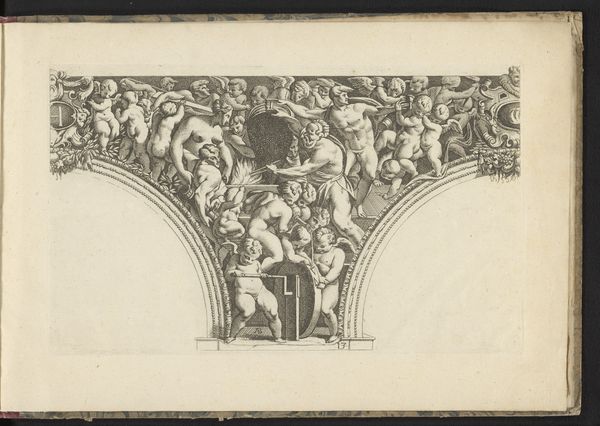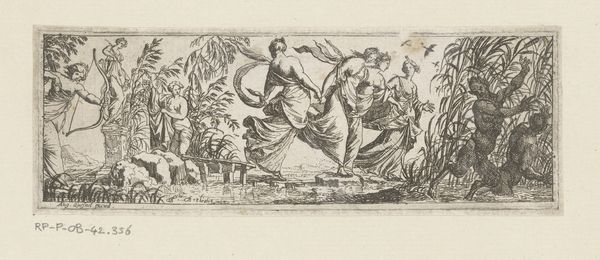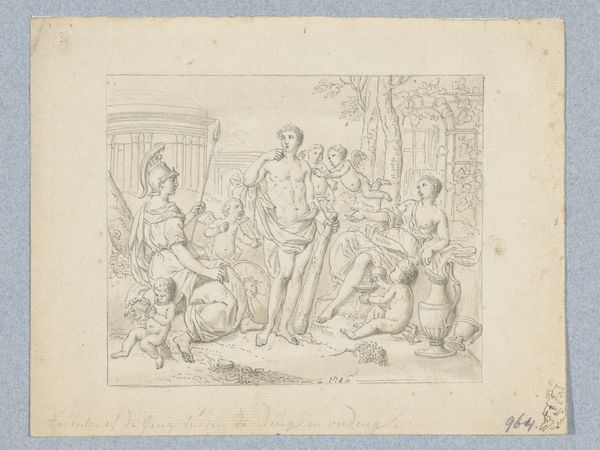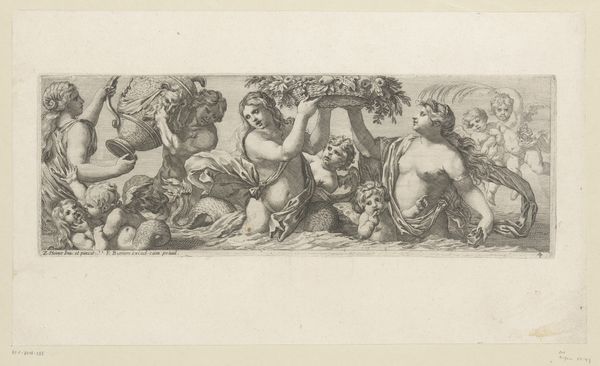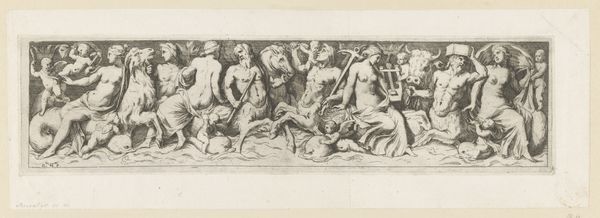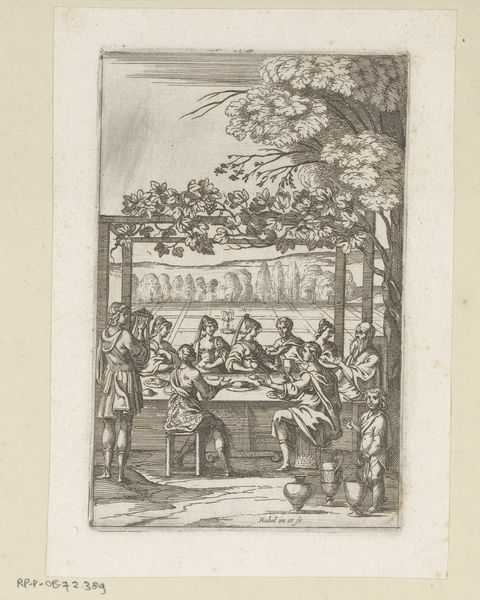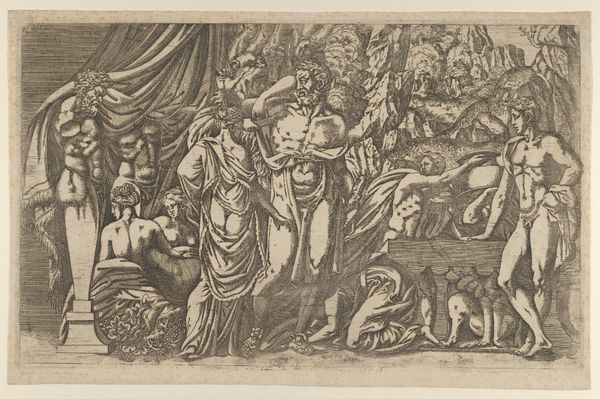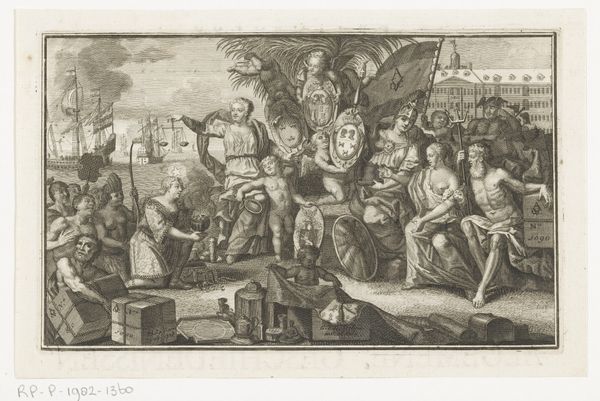
print, engraving
#
allegory
#
pen drawing
# print
#
landscape
#
figuration
#
history-painting
#
engraving
Dimensions: height 88 mm, width 380 mm
Copyright: Rijks Museum: Open Domain
This is Antonio Tempesta’s print of putti making wine and offering it to Priapus. In this bacchanal scene, these cherubic figures busily engage in the labors of the vineyard. These putti, classical figures representing innocence and playfulness, embody the energy of life. But observe closely—isn't it curious how Tempesta intertwines the sacred with the profane? The putti, normally associated with divine love, are here engaged in earthly tasks, offering their wine to Priapus, the god of fertility. It's a powerful symbol, really. Think back to ancient Roman frescoes, where similar images celebrate the cycles of nature. In Christian art, putti evolved into angels, innocent messengers of the divine. Here, they remind us of the ever-changing nature of symbols and their interpretation. In our collective psyche, these motifs persist, reflecting our desire to understand the world. They are a cyclical progression through time, a reflection of our subconscious impulses.
Comments
No comments
Be the first to comment and join the conversation on the ultimate creative platform.
